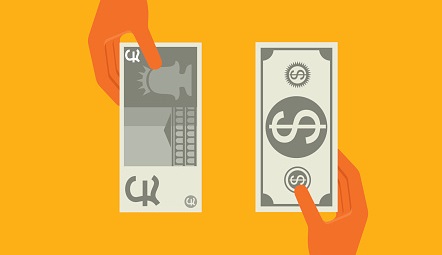The price of silver took another leg lower last week, catching bulls by surprise and marking a $3.50 pullback from the highs of the year so far. Silver closed the week below its 50 and 100-day moving averages and is moving towards its trend defining 200-day moving average for the first-time since June last year.
Now is a good time to look at potential reasons why the price of silver is starting to fall, despite the overwhelmingly bullish fundamentals surrounding the shiny metal as the FED and other central banks continue to print money.
US dollar dynamics
It is often said that the US dollar has an inverted relationship with the price of silver. Historically this has been an accurate statement, and especially so over the last nine-months.
With the greenback starts to flex its muscles on the foreign exchange market it would certainly appear that this dents silver price. Rising US bond yields have recently caused demand for the US dollar to increase, which in turn has caused traders to sell silver of the last two weeks.
Last Friday was another clear example, as the US dollar rose against a basket of top currencies and the price of silver fell sharply.


Gold play
Gold has a price positive correlation with the silver, so when gold starts to rise, typically silver price will follow. Gold has started to come under pressure after starting the year in positive fashion towards the $1,960 level. Silver prices also has a good start and rose alongside the yellow metal.
Traders have since started to shun gold, and this appears to have hurt silver prices. Gold has started to break below some technically important technical levels, and is looking like it could correct further, which may be negative for the price of silver in the short-term.


Industrial demand
Silver is used in a number of industrial components; hence the silver market tends to play close attention to the real economy, and particularly the US economy. When macro data from the United States coming in weaker-than-expected, it tends to harm the price of silver, as industrial goods are likely to be experiencing less demand.
A clear case in point is last week’s soft set of data points from the United States economy. The price of silver started to take a dive after much weaker-than-expected US weekly jobs data, and indeed retail sales data.
Weakness in the Chinese economy is also a key factor influencing silver prices now. Rises in COVID-19 cases in Chinese last year cased large investors and speculators to reprice the shiny metal and sparked a might $8.00 sell-off.
Stock markets
If global stock markets are falling then silver tends to react in a negative fashion. Typically, the metals space will start to sell-off quite sharply during heavy declines in Chinese and US stock markets.
The relationship between silver prices and the S&P 500 is more complicated and nuanced and is really only worth paying attention during heavy down days and big up days, with high volumes attached and an increase in the VIX.
Mining
Paying attention to what is happening in the mining sector is also important for silver traders and investors. Because markets work around supply and demand, understanding the current mining situation will help you form a clearer picture of market conditions.
If silver production starts to decrease, and global demand starts to pick-up, then it is seen as bullish for silver. It should be noted that the opposite is also true for silver prices.
Technical factors
While the fundamentals tend to drive the technicals, it is important to know the key tech levels when trading silvers as the market is highly speculative, and widely traded on both the spot and futures markets.


Silver tends to return to historically important levels and can often test and retest specific areas. Many traders consider silver price highly technical. Understanding the big levels on the silver market can help you gauge demand or indeed lack of demand around these key market levels.




